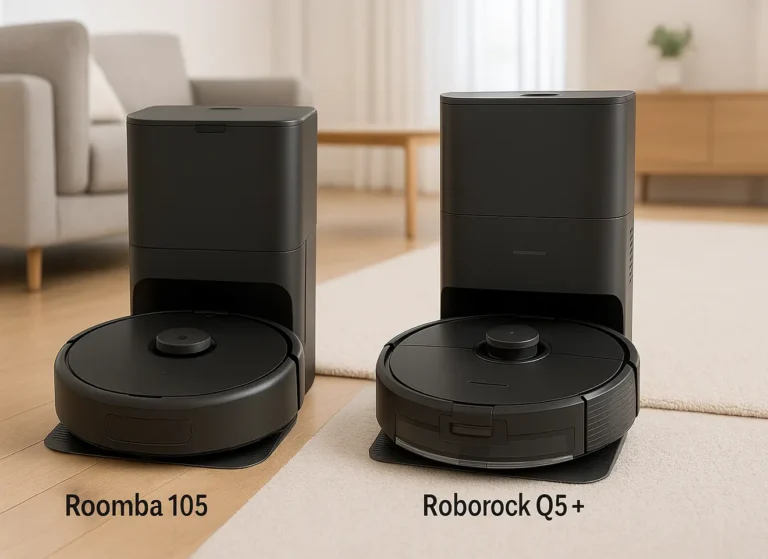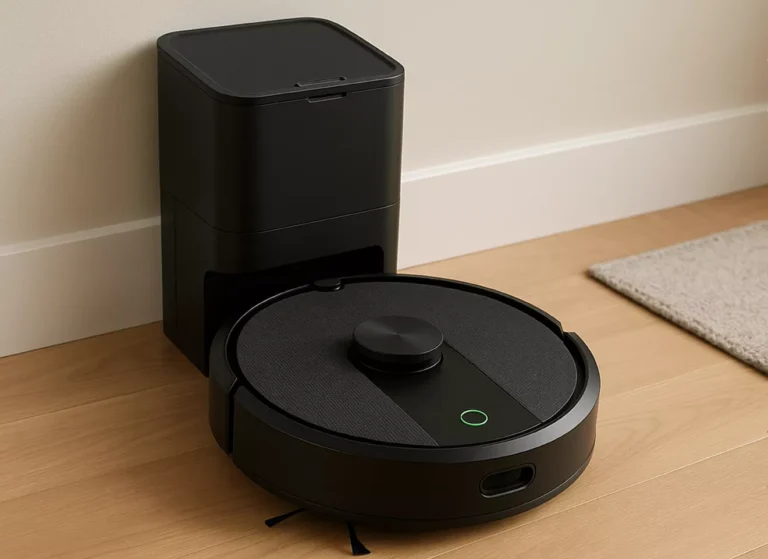Amazon eero 7 Dual-Band Mesh Wi-Fi 7 Router Review: Affordable, Reliable, and Future-Ready
A dual-band Wi-Fi 7 mesh that prioritizes simple setup, solid coverage, and value. eero 7 supports up to 2.5 Gbps plans with two 2.5 GbE ports, delivers reliable app-based management, and fits medium homes that want next-gen features without paying tri-band prices.

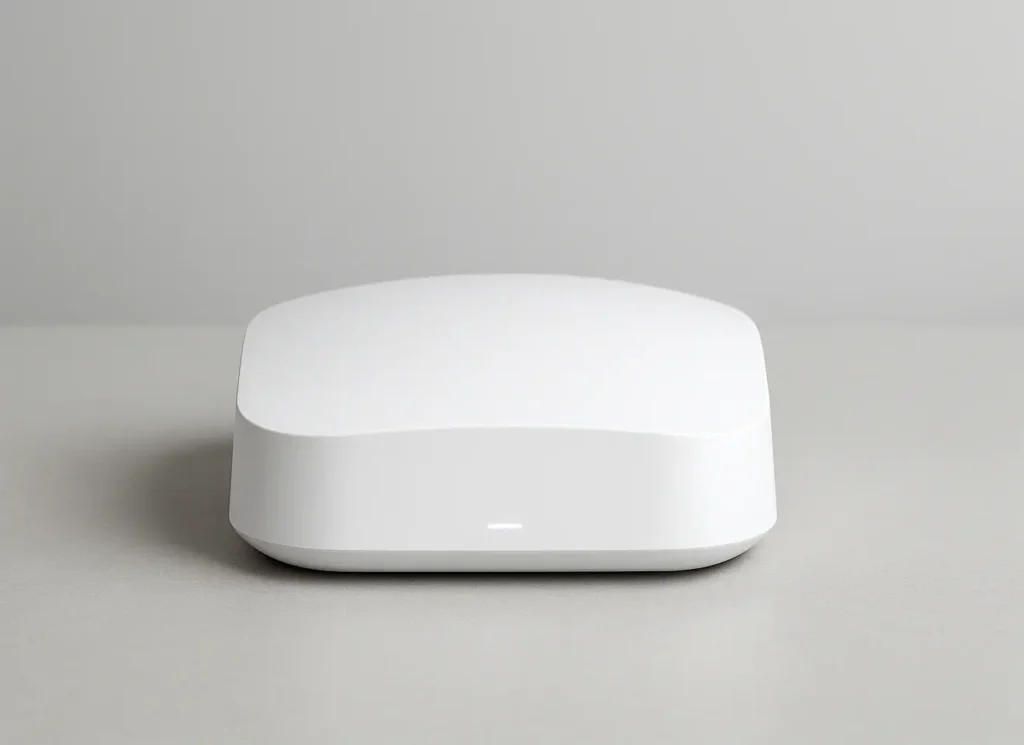
This image has been generated using AI for illustrative purposes only and does not represent an actual product image
Getting to Know the Amazon eero 7: What You Need to See First
In today’s digital age, having a reliable and fast home Wi-Fi network isn’t just a luxury—it’s a necessity. Whether you’re working remotely, streaming your favorite shows, or managing a growing number of smart home devices, a strong internet connection makes all the difference. Enter the Amazon eero 7 Dual-Band Mesh Wi-Fi 7 Router, a fresh entry into the Wi-Fi 7 market that promises to blend performance, coverage, and affordability. With support for internet plans up to 2.5 Gbps and coverage up to 6,000 square feet via a 3-pack setup, this router aims to deliver a future-proof solution. But does it live up to expectations? Let’s explore.
How the Amazon eero 7 Differs from the eero Pro 7 Tri-Band
The Amazon eero 7 is dual-band (2.4/5 GHz), while the eero Pro 7 adds a dedicated 6 GHz band that boosts total capacity and enables tri-band backhaul options in congested homes. Pro 7 targets higher peak throughput and more headroom with more premium hardware, whereas eero 7 focuses on lower cost and simpler setup with strong day-to-day coverage. For a spec-by-spec view from the source, see the official eero comparison.
Features of the Amazon eero 7 Dual-Band Mesh Wi-Fi 7 Router
The eero 7 marks Amazon’s introduction of the latest Wi-Fi 7 standard to its mesh networking lineup. While Wi-Fi 6 has been the reigning champ for a few years, Wi-Fi 7 brings promising improvements—such as higher throughput, lower latency, and more efficient spectrum usage—that prepare your home network for the increasing demands of modern connected devices.
Dual-Band Wi-Fi 7 Technology
Unlike some premium routers that offer tri-band setups, the eero 7 employs a dual-band configuration: 2.4 GHz and 5 GHz bands. This allows it to handle high-speed wireless traffic effectively, delivering up to 1.8 Gbps on wireless and even higher speeds of up to 2.3 Gbps on wired connections via its two 2.5 Gbps Ethernet ports.
Extensive Coverage for Medium to Large Homes
Each eero 7 node provides coverage for approximately 2,000 square feet. A 3-pack, which comes standard with the eero 7 system, can blanket up to 6,000 square feet, ideal for medium and larger-sized homes. This mesh system creates a seamless network by spreading Wi-Fi nodes around your house, eliminating dead zones and buffering delays. So, whether your router sits in the basement, your home office is upstairs, or you’re streaming in the backyard, the eero 7 has you covered.
Multi-Link Operation (MLO)
One standout Wi-Fi 7 feature the eero 7 supports is Multi-Link Operation (MLO). This technology allows your devices to connect over multiple frequency bands and channels at once. The result? Reduced latency, improved reliability, and faster data delivery. For gamers, video callers, and anyone juggling multiple connected devices, this can translate into a smoother, more responsive experience.
User-Friendly Setup and Management
Amazon has consistently prioritized user experience with the eero line, and the eero 7 is no exception. Using the dedicated eero app, users can set up their mesh network in minutes. The app offers simple controls to prioritize devices, create guest networks, pause internet access for kids’ devices, and keep an eye on network security. Integration with Alexa means voice commands can manage your Wi-Fi network hands-free.
Smart Home Protocol Support
Recognizing the growing smart home ecosystem, the eero 7 supports Thread, Zigbee, and the emerging Matter standard. This makes it easier to connect and control compatible devices such as smart lights, locks, and sensors, all through one unified system. For smart home beginners, this eliminates the hassle of juggling multiple hubs or apps.
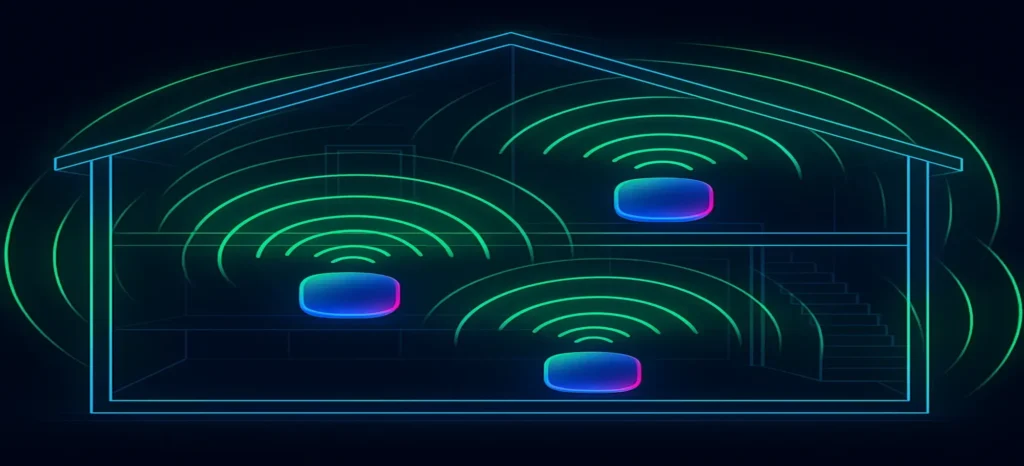
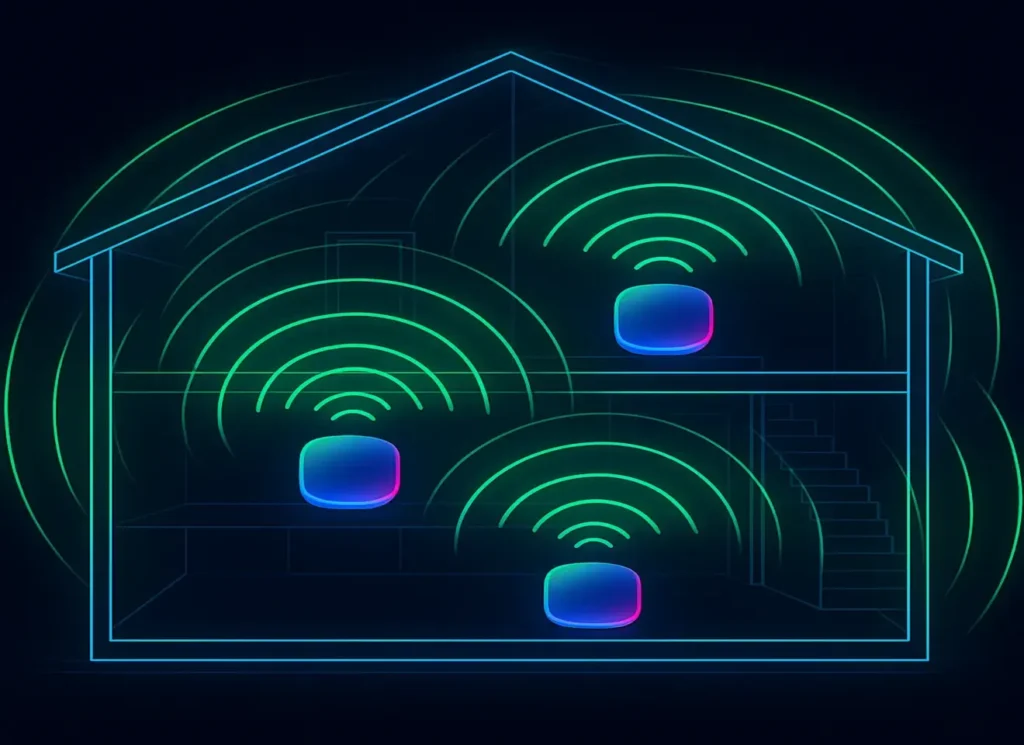
This image has been generated using AI for illustrative purposes only and does not represent an actual product image
How the Amazon eero 7 Compares to Other Mesh Wi-Fi Systems
The mesh Wi-Fi market has rapidly expanded, with brands competing on speed, coverage, ease of use, and price. Where does the eero 7 fit?
Netgear Nighthawk RS100
The Netgear Nighthawk RS100 is another dual-band Wi-Fi 7 router, offering theoretical speeds up to 3.6 Gbps. However, unlike the eero 7, it does not support the 6 GHz band and lacks mesh capabilities out-of-the-box. Coverage is more limited, focusing on single-router setups rather than mesh networks. The eero 7’s mesh design gives it an edge for larger or multi-story homes. (TechRadar)
eero Max 7
If you’re looking for premium features and the fastest speeds, the eero Max 7 is Amazon’s high-end offering. It’s a tri-band system supporting up to 4.3 Gbps speeds with coverage up to 7,500 square feet. While the Max 7 delivers excellent performance, it comes with a heftier price tag, making the eero 7 a better value proposition for most households. The dual-band eero 7 is simpler but still future-proof. (Wired)
Google Nest Wifi Pro
Google’s Nest Wifi Pro offers tri-band Wi-Fi 7 with support for 6 GHz band, giving it an advantage in handling congested networks and providing higher speeds. However, it typically requires more nodes to cover the same area as the eero 7’s 3-pack models, potentially complicating setup. Google’s ecosystem also remains a limitation for Amazon Alexa users, as cross-platform compatibility might not be as streamlined. (Consumer Reports)
Pricing and Accessibility: How Affordable Is the Amazon eero 7?
As of July 2025, the pricing for the eero 7 is as follows:
Current Pricing
- Single unit: $99.99
- Two-pack: $129.99
- Three-pack: $149.99
These prices are competitive for Wi-Fi 7 mesh systems, especially considering the coverage and featured nodes. For context, some tri-band Wi-Fi 7 setups start around $500 for similar coverage, making the eero 7 a budget-friendly way to access next-gen Wi-Fi tech.
The eero 7 is available directly from Amazon and authorized retailers nationwide, ensuring easy purchase and reliable customer support. Amazon’s frequent sales events can reduce the price further, making it even more accessible.
Real Pros and Cons of the Amazon eero 7
Pros
- Future-Proof Wi-Fi 7 Technology: Supports Multi-Link Operation for better speeds and lower latency.
- Broad Coverage: 3-pack covers up to 6,000 sq. ft., suitable for medium to large homes.
- Affordable Price: Competitive pricing compared to other Wi-Fi 7 mesh systems.
- Simple Setup: Easy and management intuitive app with Alexa integration.
- Smart Home Ready: Supports Thread, Zigbee, and Matter protocols.
- Two 2.5 Gbps Ethernet Ports: Allows for wired backhaul or connecting wired devices.
Cons
- Dual-Band Only: Lacks a dedicated 6 GHz band for ultra-high speed, which some tri-band routers offer.
- Limited Ethernet Ports: Only two per unit, which may not suffice for wired-heavy households.
- Basic Security Features: Advanced protections require subscription to eero Plus.
- Wi-Fi 7 Device Ecosystem Still Growing: Benefits may be limited until more devices support Wi-Fi 7.
Conclusion: Is the Amazon eero 7 Right for You?
If you’re in the market for a new router system that blends next-generation technology with ease of use and affordability, the Amazon eero 7 Dual-Band Mesh Wi-Fi 7 Router makes a compelling case. It is especially attractive for medium to large homes that suffer from patchy Wi-Fi coverage and need a future-ready network capable of handling multiple connected devices.
While it may not deliver the ultra-fast speeds or advanced tri-band features of top-tier routers, it hits a sweet spot for everyday users who want reliable, fast internet without an intimidating setup process or high cost. Its smart home protocol support further adds value for those beginning or expanding their connected home.
In short, the eero 7 is a smart investment for anyone who wants to improve their home Wi-Fi today while preparing for the wireless demands of tomorrow.
Related posts:
- Amazon eero Pro 7 Tri-Band Mesh Wi-Fi 7 Router Review: Speed, Coverage, and Simplicity in One by EasySmartHomeGuide Editorial Team — Updated 12 October, 2025 Amazon...
- Ring Battery Doorbell 2024 Review: Affordable Smart Security That Actually Delivers by EasySmartHomeGuide Editorial Team — Updated 1 September, 2025 Ring...
- NETGEAR Orbi 970 Series Review: Quad‑Band WiFi 7 Speed That Covers Every Corner NETGEAR Orbi 970 Series Quad‑Band WiFi 7 Mesh Network System by...
- Hornbill Biometric Fingerprint Smart Lock: Keyless Convenience Meets Affordable Security by EasySmartHomeGuide Editorial Team — Updated 1 September, 2025 Hornbill...


